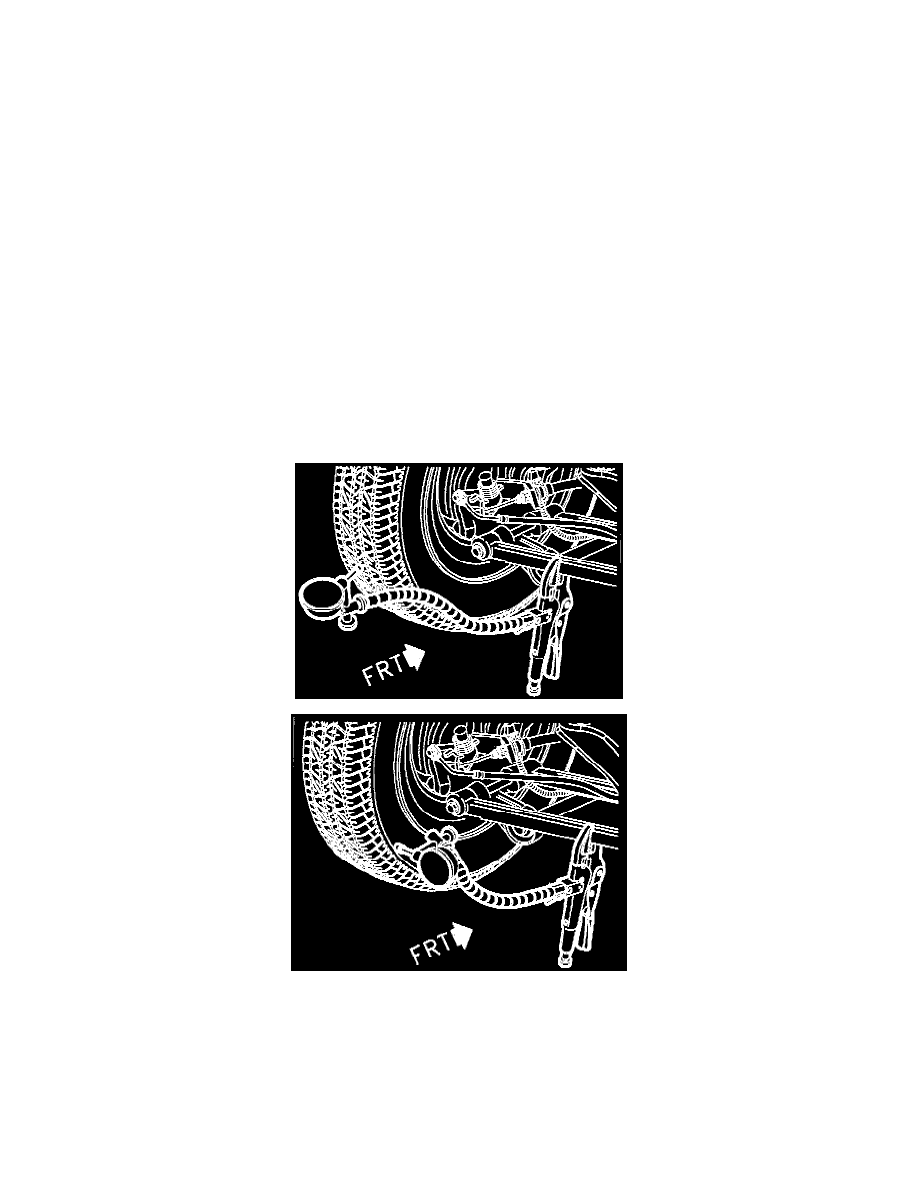SL L4-1.9L SOHC VIN 8 (1997)

Wheels: Symptom Related Diagnostic Procedures
A vibration that is tire or wheel induced can be caused by two factors: imbalance or runout.
Low-speed vibrations, those less than 64 km/h (40 mph), are usually runout related. Highway speed vibrations, those above 96 km/h (60 mph), can be
caused by either imbalance or runout.
Prior to performing any work, always road test the vehicle and perform a careful visual inspection for:
-
Obvious tire and wheel runout.
-
Obvious drive axle runout.
-
Proper tire inflation pressure.
-
Bent wheels.
-
Debris build-up on the tire or wheel.
-
Loose or missing wheel weights or wheel nuts.
-
Irregular or excessive tire wear.
-
Proper tire bead seating on rim.
-
Damaged tires, such as tread distortions, separations, or bulges from impact damage. Slight sidewall indentations are normal and will not affect
ride quality.
-
Balance is the easiest procedure to perform and should, therefore, be done first if the vibration occurs at highway speeds. An off-car, two-plane
dynamic balance should first be performed. This will correct any imbalance in the tire and wheel assembly.
-
An on-car finish balance should then be performed to correct any brake drum, rotor, or wheel cover imbalance. Follow the balancing
procedures of the balancing machine being used.
If balance does not correct the highway speed vibration, or if the vibration is at low speeds, runout is the probable cause. Runout can be caused by the
tire, wheel, or the way the wheel attaches to the vehicle. The following procedure should be used.
A. If runout is suspected, the free runout of the tire and wheel assembly should first be measured on the vehicle. A dial indicator with a roller wheel is
preferable, but a dial indicator with button end may be used. Lateral runout (side-to-side) should be measured on the tire's sidewall as close to the
tread shoulder as possible. Radial runout (up and down) should be measured on the center tread rib. Some tread designs may require tightly
wrapping a piece of tape around the center tread circumference for better dial indicator contact; for measuring wheel runout follow the procedures
in this section. Whether measuring radial or lateral runout, disregard any instantaneous indicator needle jumps due to sidewall depressions, tread
blocks, etc. Record the total indicator reading, and the location of the high point of runout. The total tire and wheel on-car runout should be less
than 1.52 mm (0.060 in.), if either measurement exceeds 1.52 mm (0.060 in.), proceed to step B.
B. If the on-car radial or lateral runout measured in Step A exceeds 1.52 mm (0.060 in.), mount the tire and wheel assembly on a dynamic balance
